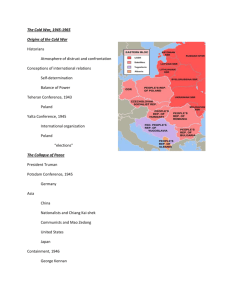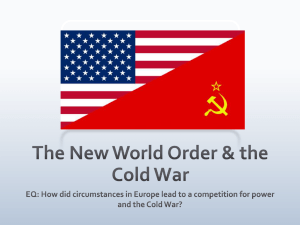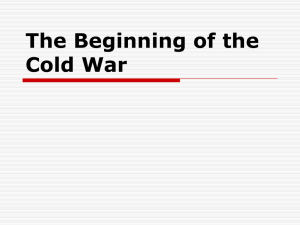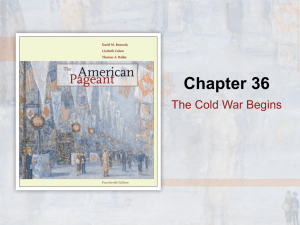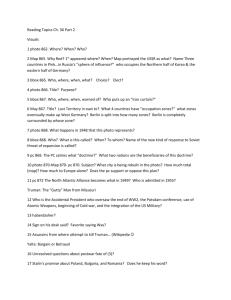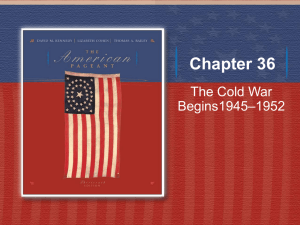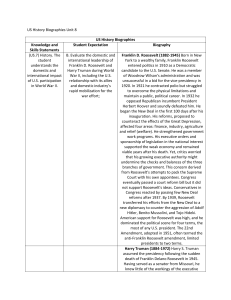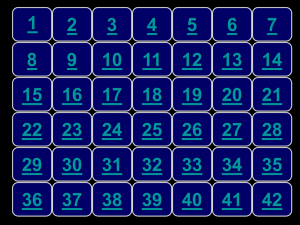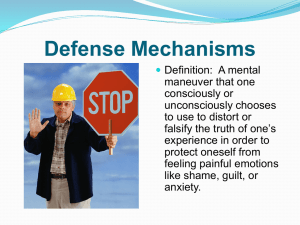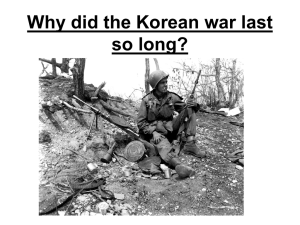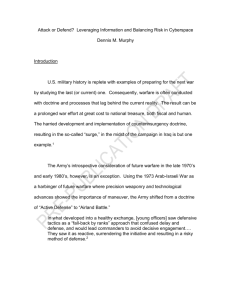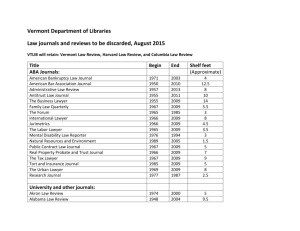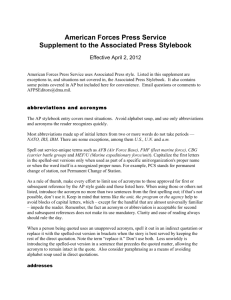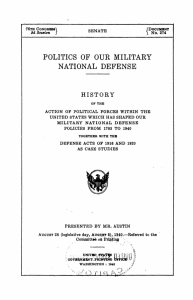The Cold War Begins
advertisement
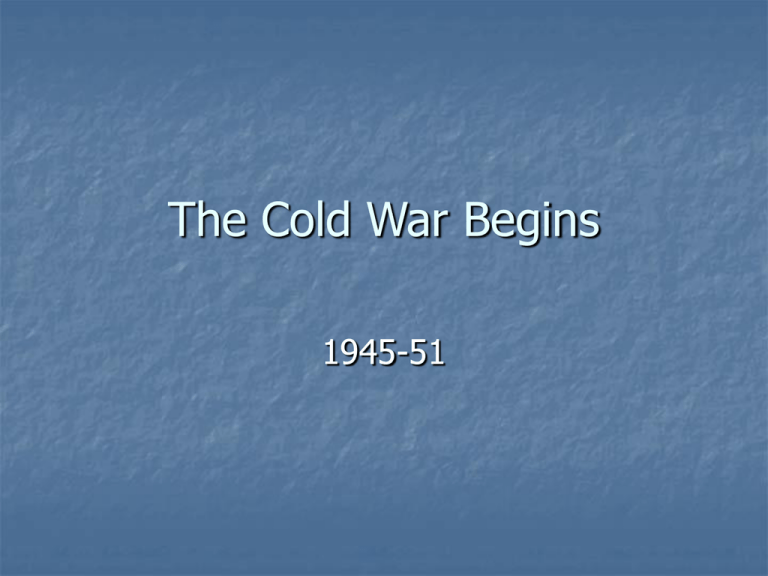
The Cold War Begins 1945-51 After WWII: 2 “superpowers” U.S. U.S.S.R. rest of the industrialized world in ruins Nuclear weapons Menace in the post-war world Between 1945 and 1950, numerous events seem to demonstrate an aggressive, expansionist Communist movement. “The Iron Curtain” Berlin Airlift U.S.S.R closes off land routes between West and Berlin, 1948-49. U.S. and allies organize air campaign to ferry supplies to the city. China goes Red! 1949: Forces led by Mao Zedong install a communist government in mainland China. Communist movements active in other parts of Asia. American reactions 1947: The Truman Doctrine “it must be the policy of the United States to support free peoples who are resisting attempted subjugation by armed minorities or by outside pressures.” Congress grants $400 million in aid to Greece and Turkey The Marshall Plan 1948: Congress agrees to plan that provides $13 billion in aid to Western Europe “Containment” Term attributed to George F. Keenan, U.S. diplomat The North Atlantic Treaty Organization Formed in 1949 Original participants: U.S., Canada, U.K., France, Low Countries, Italy, Iceland, Portugal, Denmark, Norway Modes of Deterrence Forward, collective defense NATO, other regional pacts Nuclear (unilateral) Relies on threat of retaliation with U.S. atomic arsenal. Basis of defense JCS planning in 1948 & 1949. Late 1940’s U.S.: Poor ability to wage nuclear war Not enough bombs. Not enough trained crews and planes. Need bases overseas for bombers. How bolster nuclear deterrent? Improve Strategic Air Command Build a bigger bomb (H-Bomb) Context of U.S. Military Policy Post WWII demobilization. Truman-era defense budgets. Inter-service rivalry. Drive to centralize military planning. National Defense Act of 1947 Creates the National Security Council. Creates the National Military Establishment: Creates Secretary of Defense Secretary to oversee three military executive departments: Army, Navy, and Air Force Creates the CIA. 1949 Amendment to NSA: Department of Defense created Replaces “National Military Establishment” Army, Navy and Air Force become subordinated within DoD. Deputy and assistant Secretaries of Defense created. Chairman for the JCS created. Civilian “Encroachment” into Military Affairs Congress: Women’s Armed Forces Integration Act, 1948. Uniform Code of Military Justice, 1949. The President: Executive Order 9981 (July 1948) – ordered racial integration of the armed forces Meanwhile, State Dept. and JCS planners meet in early 1950. Study results become known as NSC-68. Presents international communism as implacable enemy to U.S and the West. Warns of growing Soviet atomic arsenal. Calls for a great, rapid build-up U.S. and allied defense capabilities to deter communist expansion and risk of war. Korea 1945: Had been divided at 38th parallel by U.S. and Soviet occupation forces in 1945. The North Invades the South Attacks on June 25, 1950, with: 90,000 troops 150 Soviet-made tanks South Korean army 95,000 men Untrained, armed only to fight guerillas UN & ROK forces pushed back U.S. throws in forces to help South Koreans stave off defeat. UN forces hold a perimeter defeating approaches to the port of Pusan at end of July. Tough fighting along the Pusan perimeter, July-September. Truman & policy early in the war Obtained United Nations’ sanction of intervention to defend Korea. Sought goal of re-establishing pre-war border and ending the conflict (by military means or negotiations). UN Commander: Douglas MacArthur* Develops a plan to save the ROK: Invade at Inchon (Sept. 15, 1950) Attack successful, 8th Army drives NKPA back towards the 38th parallel. * - 8th Army Commander: Walton H. Walker October: Change of war goals Truman allows MacArthur’s troops to pursue NKPA forces beyond the 38th parallel. Truman, Rhee push UN to accept the reunification of Korea as a war aim. Chinese Intervention? Some constraints placed on MacArthur’s drive north. MacArthur assured Truman Chinese would not enter the war. "We face an entirely new war." Nov. 25, 1950: Over 250,000 Chinese soldiers launch an offensive. UN forces driven back south of 38th parallel by January 1951. New Commander for 8th Army Matthew Ridgway takes command in January 1951. Rallies UN forces. Jan. 15: Launches counterattack back up the peninsula. Meanwhile, back at the UN… U.S. allies dismayed at China’s entry into the war. UN agrees to continue the war, reverts back to original war aims: Restore pre-war borders & end the conflict
